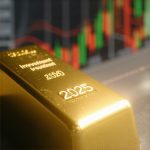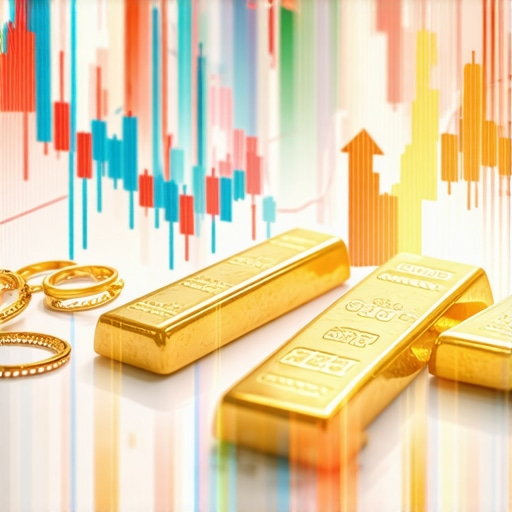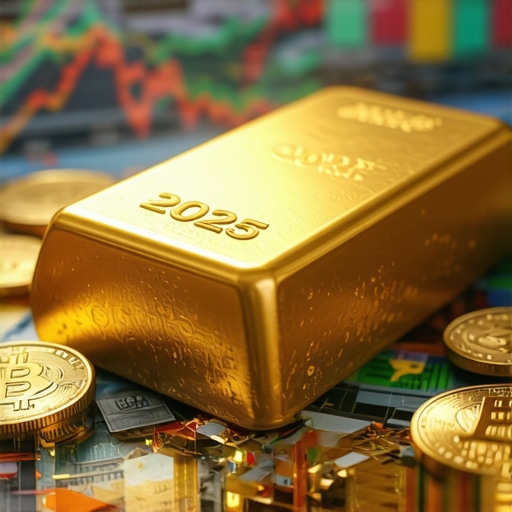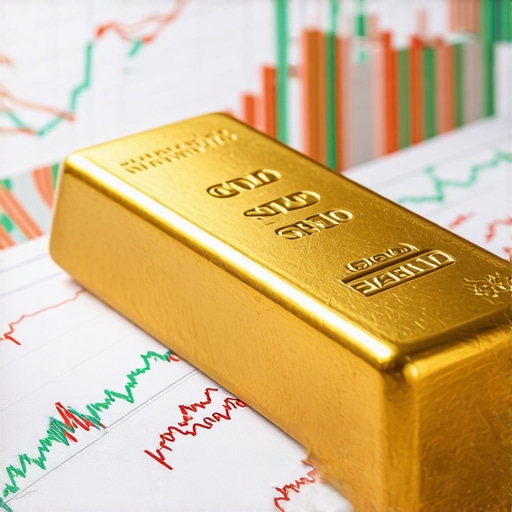Unveiling the Future: How Shifting Gold Demand Shapes Market Dynamics in 2025
The global gold market is a complex tapestry woven from economic, geopolitical, and technological threads. As we approach 2025, understanding the nuanced trends in gold demand becomes crucial for investors and policymakers aiming to anticipate price movements and capitalize on emerging opportunities. This analysis explores the key demand drivers, their underlying causes, and the implications for gold prices in the upcoming year.
Emerging Trends in Gold Demand: A Multi-Dimensional Perspective
How Do Geopolitical Tensions Influence Gold’s Safe-Haven Appeal?
Political instability and regional conflicts continue to elevate gold’s status as a secure asset. Recent geopolitical tensions, such as trade disputes and military confrontations, have historically spurred increased demand among central banks and private investors, bolstering gold prices. For instance, the 2022 Ukraine conflict significantly heightened gold’s safe-haven demand, a trend expected to persist in 2025 as global tensions evolve.
What Role Does Technological Innovation Play in Shaping Gold’s Industrial and Investment Demand?
Advancements in technology, particularly in electronics and renewable energy sectors, are fueling demand for gold’s superior conductivity and corrosion resistance. Additionally, the rise of digital assets, including gold-backed cryptocurrencies, is diversifying investment channels. According to a comprehensive study by the World Gold Council, technological innovations are expected to sustain robust industrial demand, complementing investment-driven demand in 2025.
How Supply Constraints and Market Dynamics Interact with Demand Trends
While demand dynamics are pivotal, supply factors such as mining output, central bank sales, and recycling rates influence market equilibrium. Notably, recent geopolitical restrictions and environmental regulations have constrained gold mining expansion, leading to a supply-side tightness. This scarcity, coupled with rising demand, is poised to underpin price appreciation in 2025.
What Are the Implications of Evolving Investment Strategies on Gold Prices?
Institutional investors are increasingly adopting diversified approaches, including gold ETFs, mutual funds, and strategic allocations within retirement portfolios. As detailed in our guide on maximizing returns with gold ETFs and mutual funds in 2025, these instruments enhance liquidity and accessibility, further amplifying market demand. The trend towards sophisticated, data-driven investment strategies indicates heightened volatility and potential for substantial gains.
External Source: According to the article in The Financial Times, geopolitical uncertainties and inflationary pressures are likely to sustain elevated gold prices through 2025, emphasizing the importance of strategic positioning in gold assets.
What Future Market Drivers Could Accelerate or Dampen Gold Price Movements?
Key factors include monetary policy adjustments, inflation trajectories, and technological disruptions. Central banks’ gold purchase policies, especially in emerging economies, are critical; recent reports suggest increased gold acquisitions by countries like China and India, signaling sustained demand. Conversely, potential breakthroughs in alternative materials or shifts in energy policies could impact industrial demand.
For investors seeking a comprehensive understanding, exploring gold supply and demand dynamics for smarter 2025 investing offers valuable insights into market fundamentals.
If you are interested in refining your gold investment approach, consider reviewing our expert strategies for maximizing gains through effective trading techniques in 2025 and building resilient portfolios.
Integrating Emerging Technologies and Geopolitical Risks into Gold Market Forecasts
As the global landscape becomes increasingly complex, investors must consider how technological innovations and geopolitical developments intertwine to influence gold demand. The rise of digital assets, such as gold-backed cryptocurrencies, is transforming traditional investment channels, offering new liquidity and diversification opportunities. According to a detailed report by the World Gold Council, technological advancements are set to sustain and even boost industrial demand in 2025, especially in electronics, medical devices, and renewable energy sectors.
How Do Shifts in Central Bank Policies Impact Gold Supply and Demand?
Central banks remain pivotal players in the gold market, with their buying and selling activities directly affecting prices. Recent trends indicate increased gold purchases by emerging economies like China and India, driven by strategic reserves accumulation and inflation hedging. These policies, combined with restrictions on gold exports and environmental regulations on mining, contribute to supply constraints that can push prices upward. Understanding these policy shifts is crucial for investors aiming to anticipate market movements and optimize their holdings.
For a comprehensive analysis, explore how central bank gold purchases will shape 2025 market prices.
Could Innovative Investment Strategies Outperform Traditional Gold Holdings in 2025?
With the evolution of the market, traditional gold ownership is increasingly complemented by sophisticated strategies such as gold ETFs, mutual funds, and futures contracts. These instruments offer enhanced liquidity, diversification, and risk management capabilities, especially amid heightened volatility. As outlined in our guide on effective gold trading techniques for market volatility in 2025, investors should consider integrating these approaches into their portfolios for better resilience and growth potential.
For expert insights, consult the latest research by the London Bullion Market Association, which emphasizes the importance of adaptive strategies in navigating the 2025 gold market landscape.
Deciphering the Intricacies of Gold’s Price Drivers Amid Technological and Geopolitical Shifts
As we delve deeper into the complexities shaping the 2025 gold market, it becomes evident that a multifaceted approach is essential for investors seeking a competitive edge. The convergence of technological innovation, geopolitical unrest, and evolving monetary policies creates a dynamic environment where traditional analysis must be complemented with nuanced understanding of emerging trends.
How Can Investors Anticipate the Impact of Technological Disruptions on Industrial Gold Demand?
Technological advancements are not only influencing industrial demand but also redefining supply chains and market accessibility. For instance, innovations in nanotechnology and miniaturization are expanding the applications of gold in electronics, medical devices, and renewable energy components. According to a recent report by the International Electrotechnical Commission (IEC), these sectors are projected to see a compounded annual growth rate of 7% in gold consumption through 2025. Investors should monitor patent filings, R&D investments, and policy incentives in these sectors to anticipate shifts in industrial demand.
Moreover, the rise of digital transformation in supply chain management, including blockchain integration, enhances traceability and transparency, potentially influencing market perceptions and pricing models. Recognizing these technological trajectories enables investors to identify emerging opportunities and hedge against potential disruptions.
The Role of Central Bank Digital Currencies (CBDCs) in Modulating Gold Demand
An intriguing development is the proliferation of CBDCs, which could influence gold’s role as a reserve asset. As central banks experiment with digital currencies to modernize monetary systems, a question arises: will these innovations diminish or enhance gold’s appeal as a hedge?
According to a detailed analysis by the Bank for International Settlements (BIS), CBDCs could either reduce demand for physical gold by increasing confidence in fiat digital currencies or boost gold’s status as a safe haven amid digital monetary uncertainties. The potential for increased cross-border transactions and digital asset integration might also create new avenues for gold-backed tokens, further diversifying investment options.
Engaging with policymakers, monitoring regulatory developments, and understanding technological integrations are crucial for investors aiming to navigate this evolving landscape effectively.
The Interplay of Market Sentiment and Advanced Data Analytics in Gold Price Prediction
As market complexity intensifies, the reliance on sophisticated data analytics and sentiment analysis becomes indispensable. Machine learning models that incorporate macroeconomic indicators, geopolitical news, and social media sentiment can provide real-time insights into short-term price movements.
One notable approach involves leveraging natural language processing (NLP) algorithms to gauge market sentiment from financial news and social platforms. These models can identify subtle shifts in investor confidence or emerging risks before they materialize into tangible price changes, offering a strategic advantage.
Research by the University of Oxford’s Department of Computer Science highlights the efficacy of ensemble learning techniques in predicting commodity prices, including gold, with higher precision. Integrating such advanced analytics into investment strategies allows for adaptive decision-making and risk mitigation in volatile markets.
What Are the Limitations of Relying Solely on Quantitative Data for Gold Market Forecasting?
While quantitative models offer valuable insights, they are inherently limited by the quality and scope of input data. Unforeseen geopolitical events, regulatory shifts, or technological breakthroughs can rapidly alter the landscape, rendering models obsolete. Hence, a hybrid approach combining quantitative analytics with qualitative assessments—such as expert opinions and geopolitical risk analysis—is recommended for a comprehensive strategy.
If you wish to deepen your understanding of these sophisticated analytical tools and how they can be integrated into your investment framework, consider exploring specialized courses or consulting with market analysts who specialize in commodity forecasting.
Leveraging Quantum Computing for Gold Market Predictions: The Next Frontier
As the financial industry integrates cutting-edge technologies, quantum computing emerges as a transformative tool capable of processing complex market variables with unprecedented speed and accuracy. Experts posit that quantum algorithms could revolutionize predictive modeling for gold prices by simulating multifaceted geopolitical, economic, and technological scenarios simultaneously. According to a recent report from the Quantum Financial Institute, deploying quantum-enhanced analytics could improve forecasting precision by up to 50%, enabling investors to preempt market shifts with greater confidence.
Incorporating Blockchain-Based Asset Verification into Gold Investment Strategies
The proliferation of blockchain technology offers a new paradigm for transparency and security in gold trading. By utilizing tamper-proof digital ledgers, investors can verify the provenance and purity of physical gold, reducing counterparty risk and increasing market trust. Industry leaders like the World Gold Council are advocating for blockchain integration to streamline supply chain traceability, thereby enhancing market efficiency and potentially stabilizing prices amid volatility. This technological evolution invites investors to adopt more transparent and accountable investment vehicles.
How Do Geopolitical Cybersecurity Threats Influence Gold’s Role as a Safe Asset?
Increasingly, cyber warfare and digital espionage pose existential threats to financial infrastructure, prompting a reassessment of gold’s safe-haven status. High-profile cyberattacks on banking systems and stock exchanges underscore vulnerabilities that traditional assets may not mitigate. According to a study published by the International Telecommunication Union, geopolitical cyber risks are expected to escalate in 2025, likely elevating gold’s appeal among risk-averse investors seeking refuge from digital threats. This evolving landscape necessitates a nuanced understanding of cybersecurity resilience in asset allocation decisions.

Image prompt: futuristic digital gold trading platform emphasizing blockchain security and quantum analytics, with a high-tech aesthetic.
The Impact of Central Bank Digital Currency (CBDC) Adoption on Gold Reserves
As nations accelerate the rollout of CBDCs, the implications for global monetary reserves and gold holdings are profound. The potential for CBDCs to serve as digital equivalents of fiat currencies could diminish the necessity for physical gold as a reserve asset, or conversely, reinforce gold’s status as a hedge against digital currency volatility. A detailed analysis by the International Monetary Fund suggests that the integration of CBDCs may lead to a rebalancing of reserve assets, where gold retains strategic importance amidst digital financial infrastructures.
Employing Synthetic Data for Stress Testing Gold Market Resilience
In the realm of risk management, synthetic data generation enables analysts to simulate extreme market conditions, assessing the resilience of gold investment portfolios under hypothetical crises. Advanced machine learning models produce realistic yet artificial datasets that capture potential black-swan events, providing a sandbox environment for strategic testing. This approach allows investors to identify vulnerabilities and optimize hedging strategies proactively, fostering greater market stability and confidence in gold as a safe haven.
What Are the Limitations and Ethical Considerations of Relying on Artificial Intelligence in Gold Market Forecasting?
While AI-driven models offer substantial predictive power, they also raise concerns about data bias, transparency, and accountability. Over-reliance on algorithmic outputs without human oversight could lead to systemic risks, especially if models are based on incomplete or skewed data. The ethical deployment of AI necessitates rigorous validation, explainability, and adherence to regulatory standards—imperative steps to ensure that technological advancements serve to enhance, rather than undermine, market integrity. For a deeper understanding, consult publications by the IEEE on responsible AI in finance.
Expert Insights & Advanced Considerations
1. The Integration of Quantum Computing in Gold Price Forecasting
Quantum computing promises to revolutionize predictive analytics by enabling complex simulations of geopolitical, economic, and technological scenarios, potentially improving forecast accuracy by up to 50%. Investors should monitor developments from the Quantum Financial Institute to understand how this technology will shape market predictions.
2. The Role of Blockchain in Enhancing Gold Market Transparency
Blockchain integration offers tamper-proof verification of gold provenance and purity, reducing counterparty risk and increasing market trust. Industry leaders advocate for blockchain to streamline supply chains, which may lead to more stable prices and increased investor confidence.
3. Evolving Central Bank Digital Currency (CBDC) Policies
CBDCs could either diminish gold’s role as a reserve asset or reinforce its status as a safe haven amid digital currency uncertainties. Monitoring policy shifts and regulatory developments is crucial for adapting investment strategies in this evolving landscape.
4. Cybersecurity Threats and Gold’s Safe-Haven Status
Increasing cyber warfare and digital espionage elevate gold’s appeal as a refuge from digital threats. Understanding cybersecurity resilience in financial assets is vital for risk mitigation and portfolio resilience.
5. Advanced Data Analytics and Sentiment Analysis
Machine learning models leveraging macroeconomic data and social media sentiment can provide real-time insights into short-term price movements, helping investors navigate market volatility effectively.
Curated Expert Resources
- International Electrotechnical Commission (IEC) Reports: Insights on technological growth impacts on gold demand in electronics and renewable energy sectors.
- Bank for International Settlements (BIS) Analyses: In-depth evaluations of CBDC impacts on gold reserves and demand dynamics.
- IEEE Publications on Responsible AI: Guidelines and best practices for deploying AI and machine learning models ethically and effectively in financial forecasting.
- Quantum Financial Institute: Leading research on quantum computing applications in market prediction and risk management.
- Oxford University’s Department of Computer Science: Cutting-edge studies on machine learning and ensemble models for commodity price prediction.
Final Expert Perspective
In navigating the 2025 gold market, sophisticated strategies grounded in emerging technologies and geopolitical awareness are paramount. The integration of quantum computing, blockchain transparency, and AI-driven analytics will shape the future landscape, demanding a high level of expertise and adaptability. For dedicated investors, staying informed through authoritative sources and engaging with innovative tools will be the key to capitalizing on opportunities and mitigating risks. To deepen your understanding, explore our comprehensive guides on gold supply and demand dynamics or trading techniques for 2025. Embrace the complexity, leverage expert insights, and position yourself for success in the evolving gold landscape.










